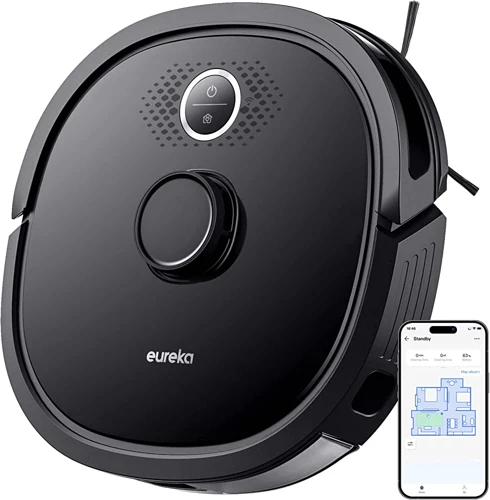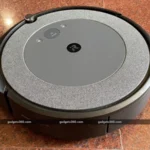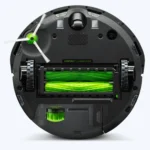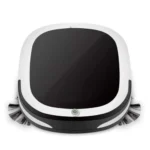Imagine coming home after a long day at work to find your floors impeccably clean, without having to lift a finger to get them that way. Thanks to the technological advancements in home cleaning, that dream can now become a reality with the advent of smart vacuum cleaners. These state-of-the-art appliances can do much more than average vacuum cleaners. They boast mapping and navigation features, obstacle detection, and automatic recharge and resume capabilities. In this article, we will explore what makes smart vacuum cleaners with mapping and navigation features and obstacle detection different from ordinary ones. We’ll also highlight their benefits, working, advantages, and factors to watch out for, so you can make an informed decision when buying one.
Benefits of Smart Vacuum Cleaners
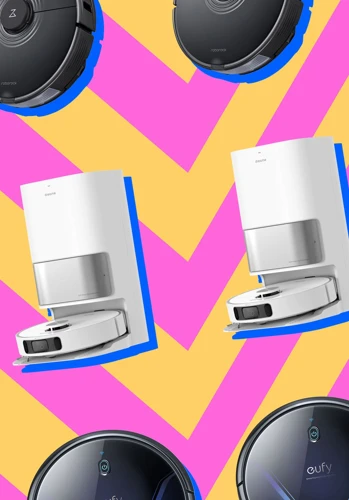
Smart vacuum cleaners have revolutionized the cleaning industry with their innovative features, making cleaning more efficient and effective. These cleaning machines are designed to provide maximum performance, using advanced technology like mapping, navigation, and obstacle detection. The benefits of using these devices are numerous, ranging from efficient cleaning to customized cleaning settings. Let’s dive into the advantages of smart vacuum cleaners and what makes them stand out from the ordinary ones. For more information on obstacle detection and avoidance in smart vacuums, you can read our article on smart vacuum obstacle detection features.
Efficient Cleaning
Efficient cleaning is one of the biggest benefits of using smart vacuum cleaners with mapping and navigation features and obstacle detection technology. These smart vacuum cleaners are equipped with advanced sensors that allow them to detect dirt, dust, and debris on all types of surfaces. They use powerful suction technology to pick up even the smallest particles, leaving your floors spotlessly clean.
One of the key advantages of smart vacuum cleaners with mapping and navigation features and obstacle detection is that they use specialized algorithms to plan the most efficient cleaning route. This means that they can cover more ground in a shorter amount of time, allowing you to enjoy a cleaner home without spending hours on cleaning.
Smart vacuum cleaners that use mapping and navigation features and obstacle detection technology are particularly effective in cleaning large spaces. They can create a map of the area they need to clean, which helps them identify the most efficient cleaning path. They can also detect obstacles and adjust their cleaning path accordingly, ensuring that they don’t miss any spots or bump into furniture.
Many smart vacuum cleaners with mapping and navigation features and obstacle detection technology come with a mobile app that allows you to customize your cleaning schedule. You can schedule your vacuum to clean specific areas at certain times, ensuring that your home is always clean and tidy.
Smart vacuum cleaners with mapping and navigation features and obstacle detection technology are an excellent investment for anyone who wants to enjoy clean, dust-free floors without spending hours on cleaning. They are efficient, time-saving, and can provide customized cleaning schedules to fit your lifestyle.
If you want to learn more about the top smart vacuum cleaners with obstacle detection technology currently available in the market, check out our list of the top 5 smart vacuum cleaners with obstacle detection. We have also written an article on the future of obstacle detection in smart vacuums and common problems with obstacle detection technology, which you may find helpful.
Saves Time and Effort
Smart vacuum cleaners with mapping and navigation features and obstacle detection are game changers in the field of cleaning. They can save you time and effort compared to regular vacuum cleaners. Here’s how:
- Automatic Cleaning: One of the biggest advantages of using a smart vacuum cleaner is that it can start cleaning on its own without any intervention from you. You can schedule your vacuum cleaner to clean your home according to your preference or you can also start cleaning through your smartphone. It eliminates the need for manually setting up your cleaning system, saving you time and effort.
- Effortless Cleaning: Apart from saving time, smart vacuum cleaners also require minimal effort from your part. Traditional vacuum cleaners need to be manually turned on and controlled throughout the house. However, with smart vacuum cleaners, you can sit back and relax while it takes care of everything. The comprehensive mapping feature ensures that it covers every part of your house, thoroughly cleaning it.
- Multi-Tasking: Smart vacuum cleaners are equipped with advanced features that allow them to multi-task. They can clean various surfaces, including carpets, tiles, hardwood, and even upholstery, depending on the type of smart vacuum you have chosen. This means you don’t have to switch between different cleaning equipment that can be time-consuming and tedious.
- Convenient Charging: Smart vacuum cleaners have an automatic recharge feature that allows it to return to its charging dock and charge itself when the battery is running low. This ensures that the vacuum cleaner is always ready to be used, without any inconvenience to you. You won’t have to manually charge the vacuum cleaner or worry about it running out of power in the middle of a cleaning cycle.
Smart vacuum cleaners are designed to make your life easier by saving you time and effort. With their advanced features such as mapping and navigation, obstacle detection, and automatic recharge and resume options, they take care of all your cleaning needs, giving you more time for other important activities. However, to make the most of these features, it is important to choose the right model that suits your needs. To learn more about the obstacle detection features found in smart vacuums, check out future obstacle detection smart vacuums, as well as common problems that can arise with obstacle detection on smart vacuums.
Customized Cleaning
Smart vacuum cleaners with mapping and navigation features and obstacle detection offer customized cleaning options that give you full control over how and when your floors get cleaned. With their programmable settings and advanced sensors, you can create personalized cleaning schedules, adjust cleaning modes, select specific areas to clean and avoid, and more. Here are some of the customized cleaning options offered by these smart vacuums:
- Selective cleaning: These smart vacuums allow you to choose specific areas that need to be cleaned or avoided. So, if you spilled something in the living room, you can program the vacuum to clean only that area and avoid the rest of the house.
- Cleaning modes: Most smart vacuums come with multiple cleaning modes, such as spot cleaning, turbo cleaning, and edge cleaning, to help you customize the cleaning process. For instance, if you have pets, you can switch to the turbo mode to pick up pet hair more effectively.
- Virtual barriers: You can also set up virtual barriers with smart vacuums to keep them away from certain areas, like a room with delicate items.
- App control: With the help of a companion app, you can remotely control your smart vacuum cleaner and customize its settings. You can create a cleaning schedule, change cleaning modes, check battery life, and more from your smartphone.
Using these customization options not only provides you with a greater level of control over your cleaning tasks but also allows you to save time and effort in the long run. You can set up a cleaning schedule that matches your routine or clean specific areas when needed, which helps you to maintain a clean and tidy environment without having to put in as much effort.
Additionally, if you have kids or pets at home, you can avoid cleaning during their nap time or feeding time by setting up the virtual barriers or selective cleaning options. These features ensure that your smart vacuum cleaner works according to your convenience, making cleaning less of a chore and more of a relaxing task.
If you’re curious to learn more about the obstacle detection feature of these smart vacuums, you can read our detailed article on smart vacuum cleaners with obstacle detection features.
Working of Smart Vacuum Cleaners
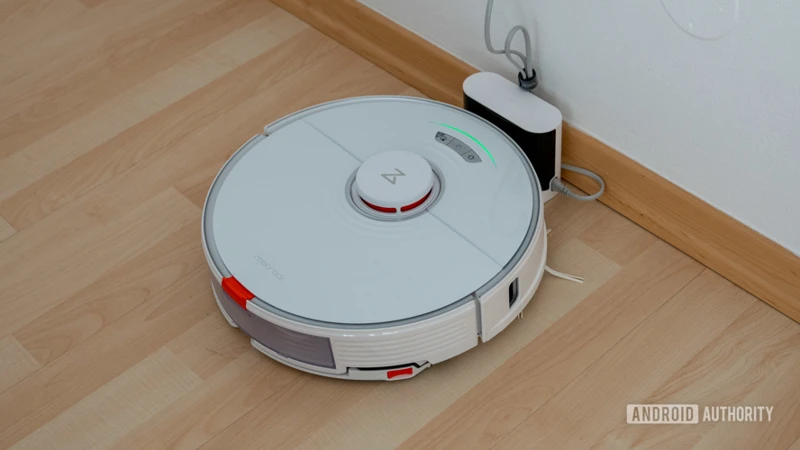
As smart technology continues to evolve, so too does the cleaning industry. Gone are the days of manual labor, as Smart Vacuum Cleaners are now leading the charge in keeping our homes spotless. But what exactly makes these vacuum cleaners smart? How do they navigate through our homes without human assistance? In this section, we’ll delve into the inner workings of these innovative devices, exploring their key features such as mapping and navigation, obstacle detection, and automatic recharge and resume. So sit back, relax, and let’s get into the nitty-gritty of how these machines take the stress out of vacuuming.
Mapping and Navigation
Smart vacuum cleaners with mapping and navigation are designed to be more efficient in cleaning your home compared to ordinary ones. These advanced robots are equipped with sensors and mapping technology that allows them to scan and remember your home’s layout. Here are some of the features that make mapping and navigation a must-have on a smart vacuum cleaner:
- Room identification: Smart vacuum cleaners with mapping and navigation can identify different rooms in your home and map out the most efficient cleaning path for each area.
- Memory: These robot cleaners use their mapping technology to remember the layout of your home, which means they will not repeatedly clean the same area or miss spots during cleaning.
- Obstacle detection: Mapping and navigation technology allows smart vacuum cleaners to detect obstacles in their path, such as furniture, walls or pets. They can scan and plan their route accordingly, navigating around any obstacles and avoiding collisions.
- Customized cleaning: Mapping and navigation allows the smart vacuum cleaner to clean your home according to your preferences. You can use an app to create a cleaning schedule or map certain areas that require more or less cleaning depending on your needs. This customization feature establishes a balance between cleaning and energy usage, saving both time and effort.
Mapping and navigation technology transforms a regular robot vacuum cleaner into a smart one. This feature helps it to work more efficiently, save time, and adapt to your cleaning needs over time, making your cleaning experience much simpler and more efficient.
Obstacle Detection
One of the most impressive features of smart vacuum cleaners is their obstacle detection capability. These devices are equipped with sensors and cameras that help them detect obstacles and avoid collisions. Here are some of the key ways in which obstacle detection works in these devices:
- Ultrasonic sensors: Many smart vacuum cleaners use ultrasonic sensors to detect obstacles in their vicinity. These sensors emit high-frequency sound waves and measure the time taken for the waves to bounce back after hitting an object. Based on this data, the smart vacuum cleaner can determine the distance and location of an obstacle and adjust its course accordingly.
- Infrared sensors: Infrared sensors are also commonly used in smart vacuum cleaners for obstacle detection. These sensors emit infrared beams and detect the reflection of the beams when they hit an obstacle. The device can then calculate the distance and direction of the obstacle and take appropriate action.
- Cliff sensors: Smart vacuum cleaners are also equipped with cliff sensors that help them avoid falls down stairs and other such drop-offs. These sensors use infrared light to detect the edge of a surface and alert the device to stop and turn away to avoid falling.
- Camera sensors: Some high-end smart vacuum cleaners come with camera sensors that allow them to see and map their environment. These devices use technologies such as simultaneous localization and mapping (SLAM) to create a real-time map of their surroundings, which helps them navigate and avoid obstacles with greater accuracy.
Thanks to obstacle detection technology, smart vacuum cleaners are much less likely to bump into furniture, walls, or other obstacles while cleaning. This makes them safer to use and less likely to cause damage to your home or belongings. Additionally, it helps to ensure that the device cleans more thoroughly, allowing it to reach corners and under furniture that might otherwise be missed. Obstacle detection is a key feature that makes smart vacuum cleaners stand out from traditional models, and is a big reason why these devices are becoming increasingly popular in homes around the world.
Automatic Recharge and Resume
One of the key features that makes smart vacuum cleaners stand out from ordinary ones is their ability to automatically recharge and resume cleaning. This means that when the battery is low, the vacuum cleaner will automatically dock itself on its charging station to recharge. Once the battery is fully charged, the vacuum cleaner will resume cleaning from where it left off. This feature is particularly useful for those with larger homes, as it can ensure that the entire area is cleaned without interruption.
The Automatic Recharge and Resume feature works in the following way:
- The vacuum cleaner comes with a charging dock that it can easily find and dock on, thanks to its mapping and navigation abilities.
- When the battery level drops below a certain threshold, the vacuum cleaner will automatically navigate its way back to the charging dock to recharge.
- The charging time varies depending on the model of the vacuum cleaner, but it typically takes a few hours to fully recharge.
- Once the battery is fully charged, the vacuum cleaner will automatically leave the charging dock and resume cleaning from where it left off.
- This feature ensures that the vacuum cleaner can cover larger areas without the need for manual intervention.
Having the Automatic Recharge and Resume feature also means that users can set the vacuum cleaner to run when they are not at home, ensuring that the entire area is cleaned by the time they return. This is particularly beneficial for those with busy schedules, as they can return to a clean home without having to spend time cleaning themselves.
The Automatic Recharge and Resume feature is a valuable addition to any smart vacuum cleaner, making them not only more efficient but also more convenient to use.
Advantages of Using Smart Vacuum Cleaners
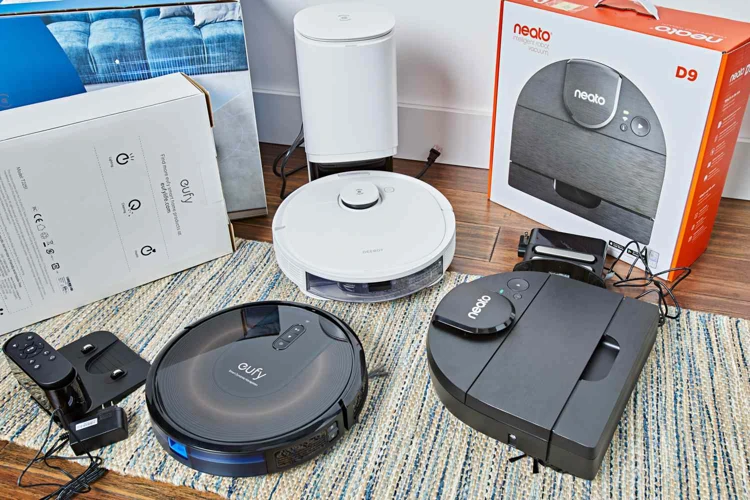
When it comes to keeping your home clean, smart vacuum cleaners can make a world of difference. These high-tech gadgets are equipped with advanced features that set them apart from ordinary vacuum cleaners. By making use of mapping and navigation capabilities and obstacle detection sensors, they can detect and avoid obstacles while cleaning efficiently. But the benefits of smart vacuums go far beyond that. In this section, we’ll explore some of the distinct advantages of using a smart vacuum cleaner.
Easy to Use
Using a Smart Vacuum Cleaner is incredibly easy, and requires minimal effort on the user’s part. These devices are designed with advanced features that not only make cleaning more efficient and effective, but also make the process more user-friendly.
One of the key benefits of a Smart Vacuum Cleaner is that they can be controlled via a mobile app or voice commands, which means you don’t even need to physically interact with the device to turn it on or off or to adjust settings. This feature is particularly useful for individuals with physical disabilities, senior citizens, or anyone who wants to simplify their cleaning routine.
Additionally, Smart Vacuum Cleaners usually come with intuitive control interfaces that are easy to understand and navigate. They often have simple buttons or touch screens that allow you to adjust power levels, cleaning schedules, and other important settings with a few simple taps.
Most of these devices can be programmed to operate autonomously, which means they will run according to a predetermined cleaning schedule and return to their docking station for automatic recharging. This hands-free approach to cleaning is incredibly convenient for busy individuals who don’t have time to manually operate a vacuum cleaner on a regular basis.
Smart Vacuum Cleaners are designed with user convenience in mind. They are incredibly easy to use, with intuitive controls that make adjusting settings a breeze. Additionally, their ability to be controlled remotely and programmed to operate autonomously make them an excellent choice for anyone looking to simplify their cleaning routine.
Table: Features that make Smart Vacuum Cleaners Easy to Use
| Feature | Description |
|---|---|
| Mobile App Control | Smart Vacuum Cleaners can be controlled via a mobile app, making it easy to turn them on or off, adjust settings, or check their status, even when you’re not at home. |
| Voice Command | Many Smart Vacuum Cleaners can be controlled using voice commands, like Amazon Alexa or Google Home. This is particularly helpful for individuals with physical disabilities or who want to simplify their cleaning routine. |
| Intuitive Control Interface | Smart Vacuum Cleaners usually have simple buttons or touch screens that allow you to adjust settings with ease, even if you’re not familiar with the device. |
| Autonomous Operation | Smart Vacuum Cleaners can be programmed to operate autonomously, which means they will run according to a set cleaning schedule and return to their docking station for recharging. This hands-free approach to cleaning is incredibly convenient for busy individuals. |
Cost-Effective
One of the major advantages of using smart vacuum cleaners with mapping and navigation features and obstacle detection is that they are cost-effective. Here are some reasons why:
1. Energy Efficient: Smart vacuum cleaners consume less energy compared to traditional ones. They use advanced technologies like mapping and navigation, which enables them to cover the entire cleaning area with precision and efficiency, reducing the time required to clean the area. This results in lesser energy consumption and ultimately lower electricity bills.
2. Time-Saving: Traditional vacuum cleaners require manual control, which can be time-consuming. Smart vacuum cleaners, on the other hand, are equipped with advanced features like automatic navigation and obstacle detection, which allows them to clean efficiently without manual intervention. This results in saving time and effort.
3. Low Maintenance: Smart vacuum cleaners are designed to be low-maintenance. They come equipped with powerful motors that are designed to last a long time. They also require minimal cleaning, as they come equipped with efficient filtration systems that prevent clogging and ensure that the vacuum cleaner stays in top condition.
4. No Need for Professional Help: When you invest in a smart vacuum cleaner with mapping and navigation features, you don’t need to hire professional help for cleaning purposes. With advanced features like obstacle detection, automatic recharge and resume, and customized cleaning, you can clean your entire house without any external help. This saves you a lot of money in the long run.
5. Longevity: As stated earlier, smart vacuum cleaners are built to last a long time. This means that you won’t have to replace your vacuum cleaner for years to come. Investing in a smart vacuum cleaner is a long-term investment that pays off in the form of lower maintenance costs and a longer lifespan.
Smart vacuum cleaners with mapping and navigation features and obstacle detection are cost-effective solutions for homeowners who want to keep their houses clean without spending too much time or money. Their energy-efficient design, low maintenance, and longevity make them a worthwhile investment for any household.
Improves Indoor Air Quality
Smart vacuum cleaners not only clean your floors efficiently, but they can also improve indoor air quality. Traditional vacuum cleaners can sometimes spread more dust and allergens around the house. However, smart vacuum cleaners with HEPA filters can trap fine dust particles, pet hair, and other allergens, removing them from the air and making your home a healthier place to live.
HEPA (High-Efficiency Particulate Air) filters are effective at capturing airborne particles as small as 0.3 microns, which is much smaller than what the human eye can see. They use a dense layer of mesh to trap tiny particles that can cause allergies and respiratory problems for people.
In a smart vacuum cleaner, the HEPA filter is usually located after the dustbin. The suction mechanism sucks up dust and debris, which then passes through the filter. The HEPA filter traps all the fine particles, while the clean air is released back into your home.
Using a smart vacuum cleaner with a HEPA filter can be particularly beneficial for individuals with allergies, asthma, or other respiratory issues. The filter can capture pet dander, pollen, dust mites, and other allergens that can trigger symptoms. With regular vacuuming, you can reduce your exposure to these triggers and create a healthier home environment.
Benefits of using smart vacuum cleaners for improving indoor air quality:
| Benefits | Description |
| Reduces Allergens | HEPA filters trap allergens such as pet dander, pollen, and dust mites, reducing exposure and symptoms. |
| Improves Respiratory Health | Capturing airborne particulates can help lessen breathing difficulties, asthma attacks, and other respiratory problems. |
| Minimizes Dust and Debris | A smart vacuum cleaner with a HEPA filter can suck up fine particles, reducing dust buildup and promoting a cleaner environment. |
| Creates a Healthier Home | By trapping and removing allergens and pollutants, a smart vacuum cleaner can help create a healthier living space for you and your family. |
Using a smart vacuum cleaner with a HEPA filter can be an effective way to improve indoor air quality, minimize harmful pollutants, and create a healthier home environment for you and your loved ones.
Durability
When investing in a smart vacuum cleaner, durability is definitely a factor to consider. You want to ensure that your purchase will last for years to come, especially considering the price tag these devices usually come with. Here are some aspects to keep in mind when it comes to durability:
- Rugged and tough build: A good smart vacuum cleaner will be able to withstand the wear and tear that comes with regular use. Look for models that are built with high-quality materials and are sturdy enough to withstand any accidental falls or collisions with obstacles.
- Long-lasting battery: The battery life of a smart vacuum cleaner is another important factor that contributes to its durability. The longer the battery life, the more cleaning cycles the device can handle before needing a replacement. Make sure to check the battery capacity and the estimated run time of the vacuum before making your purchase.
- Low maintenance: A durable smart vacuum cleaner shouldn’t just last for a long time; it should also require minimal maintenance. Look for models that have removable and washable filters, as well as easily replaceable parts such as brushes and dustbins. This will save you both time and money in the long run.
- Manufacturer warranty: A strong manufacturer warranty can provide added peace of mind when it comes to the durability of your device. Check to see if the product comes with a warranty, what it includes, and how long it lasts.
Investing in a durable smart vacuum cleaner is essential to ensure that the device is able to withstand the test of time and continue to function effectively without requiring frequent replacements or extensive repairs. Remember to take into consideration factors such as build quality, battery life, maintenance requirements, and manufacturer warranties before making your purchase.
Smart Home Integration
One of the major advantages of using a smart vacuum cleaner with mapping and navigation features and obstacle detection is its integration with smart home technology. With the rise of smart homes, homeowners are constantly seeking ways to simplify their daily routines, and a smart vacuum cleaner can play a significant role in that regard.
Smart home integration allows the smart vacuum cleaner to connect and communicate with other smart devices in the home, such as smartphones, tablets, and voice-activated home assistants like Amazon Alexa or Google Home. Using these devices, homeowners can easily control and monitor the cleaning duties of the smart vacuum cleaner from anywhere, anytime.
One of the key benefits of smart home integration is the ability to program and schedule cleaning sessions. For example, homeowners can set up cleaning schedules for the smart vacuum cleaner to clean specific rooms at specific times, all from their smartphones or other smart devices. This is particularly useful for individuals who lead busy lifestyles and do not have time to clean their homes regularly.
In addition to scheduling, smart home integration allows for greater control over the cleaning process. Using voice commands or the touch of a button, users can direct the smart vacuum cleaner to start or stop cleaning, move to a specific location, or adjust the cleaning settings. This level of customization and control provides greater precision and efficiency in cleaning, ensuring that the home is always spotless.
Another advantage of smart home integration is that users can receive alerts and notifications. For example, if the smart vacuum cleaner encounters an obstacle while cleaning, it can send a notification to the user’s smartphone, allowing them to respond promptly. Additionally, notifications can be set up to warn users when the dustbin is full or when the battery is low.
Smart home integration makes using a smart vacuum cleaner with mapping and navigation features and obstacle detection much easier and more convenient. It simplifies the cleaning process, offers greater control and precision, and allows homeowners to monitor and adjust their cleaning routines from anywhere. The use of this technology is transforming the home-cleaning industry and is just one example of how smart technology can make our lives easier.
| Advantages | Disadvantages |
|---|---|
| Allows for programming and scheduling cleaning sessions | May be more expensive than non-smart vacuum cleaners |
| Provides greater control over cleaning process | Requires connectivity to compatible smart devices |
| Allows for customization of cleaning settings | May require complex set-up and installation process |
| Provides notifications and alerts | May have a learning curve for those unfamiliar with smart technology |
Factors to Watch Out For
As with any appliance, there are several things to consider when purchasing a smart vacuum cleaner. It’s important to look beyond the fancy features and flashy marketing and focus on the factors that will ultimately determine whether the device is worth the investment. In this section, we’ll explore some of the essential factors to watch out for when choosing a smart vacuum cleaner. Keep in mind that what’s important to one person may not be important to another, so it’s vital to determine your individual needs and priorities before making a purchase.
Battery Life
One important factor to watch out for when deciding which smart vacuum cleaner to purchase is the battery life. Smart vacuums require a lot of power to navigate and clean efficiently, so it’s crucial to choose a model with a long-lasting battery.
Here are some points to consider:
- Battery capacity: Check the battery capacity of the vacuum cleaner before making a purchase. This will directly impact how long the vacuum can run for before needing to recharge. Some models come with larger batteries which can last up to 120 minutes, whereas others may only last for an hour or less.
- Charging time: Another important factor to consider is how long the battery takes to recharge between uses. Ideally, the vacuum cleaner should take no more than 3-4 hours to recharge fully.
- Battery type: Consider the type of battery used in the smart vacuum cleaner. Lithium-ion batteries are the most common type used because of their durability and quick charging times. Some models may use nickel-metal hydride batteries which are cheaper but less efficient.
- Smart charging: Look for models that have smart charging technology built-in. This allows the vacuum cleaner to automatically return to its charging dock when the battery is running low and then resume cleaning once it’s charged.
The battery life of a smart vacuum cleaner plays a crucial role in its usability and efficiency. Consider the above factors when making a decision on which model to purchase to ensure you’re getting the most out of your investment.
Noise Level
When it comes to choosing a smart vacuum cleaner, one important factor to consider is the noise level. Nobody wants a vacuum cleaner that produces too much noise, especially when it comes to automated cleaning. Here are some things to keep in mind when looking for a smart vacuum cleaner that produces minimal noise.
- Decibel level: Look for the decibel level of the vacuum cleaner. Decibel scale is a measure of sound intensity, and a higher value indicates a louder sound. Most smart vacuum cleaners have a decibel range between 55-65 dB, which is relatively low and shouldn’t cause disturbance.
- Specs: Check the specs of the vacuum cleaner to ascertain how the noise is managed. A good vacuum cleaner will have advanced noise reduction features such as sound insulation and noise-optimized cleaning.
- Reviews: Look for reviews from other users to see if they have reported the vacuum cleaner to be excessively noisy. This approach is particularly important if you live in an apartment complex, as you don’t want to disturb your neighbors with loud cleaning sounds.
- Silent mode feature: Check to see if the vacuum cleaner has a silent mode feature. Some vacuum cleaners are designed to operate at a lower decibel level when operating in silent mode, which can be perfect for overnight cleaning or when you and your family need to concentrate on other tasks.
It’s important to choose a vacuum cleaner with low noise production that will enable you to clean your space peacefully without any disturbance. Keep in mind that a quieter smart vacuum cleaner doesn’t compromise on performance, so make sure to choose a cleaner that has all the important features you need to achieve an effective and efficient cleaning experience.
Suction Power and Dustbin Capacity
One of the most important factors to consider when purchasing a smart vacuum cleaner is its suction power and dustbin capacity. After all, what good is a vacuum cleaner if it can’t pick up dirt and debris effectively or frequently enough?
Suction power is measured in units of air watts, which determines the amount of suction power a vacuum cleaner can generate. Generally, the higher the air watts, the better the cleaning performance will be. However, it’s important to note that suction power alone doesn’t always equate to better cleaning performance. The vacuum cleaner’s brush roll, filtration system, and other features can also affect its efficiency in cleaning different types of surfaces, such as carpets or hard floors.
Dustbin capacity is another important factor to consider, especially if you have a larger home or pets that shed frequently. A vacuum cleaner with a small dustbin capacity will require more frequent emptying, which can be a hassle. On the other hand, a larger dustbin capacity means less frequent emptying, saving you time and effort.
When choosing a smart vacuum cleaner, it’s crucial to strike a balance between suction power and dustbin capacity. Ideally, you want a vacuum cleaner that has high suction power and a decent dustbin capacity to ensure efficient cleaning and less frequent emptying. It’s also important to consider the type of dustbin- whether it is bagged or bagless. A bagged dustbin is more hygienic but requires repeated purchases of bag every time it’s full, while a bagless dustbin lowers the maintenance cost but can spread dust in the air during cleaning.
Make sure you choose a smart vacuum cleaner with sufficient suction power and dustbin capacity for your home’s unique cleaning needs. Don’t compromise on either one as both are equally important for efficient cleaning.
Conclusion
In conclusion, it is evident that smart vacuum cleaners with mapping and navigation features and obstacle detection have revolutionized the way we clean our homes. These appliances are equipped with cutting-edge technology that makes cleaning floors easy, convenient, and efficient.
By utilizing these smart cleaning tools, homeowners can benefit from a number of advantages such as: reduced effort and time spent cleaning, customized cleaning options, improved indoor air quality, and integration with other smart home devices.
However, it is important to keep in mind certain factors when selecting the right smart vacuum cleaner. Suction power, dustbin capacity, battery life, and noise level are some important considerations to make to ensure that you choose the right appliance that fits your cleaning needs.
Overall, smart vacuum cleaners are a worthwhile investment for households looking to simplify their cleaning process while also improving their indoor air quality. By using these appliances, you can save your valuable time and effort while also enjoying a cleaner, healthier living environment.
Frequently Asked Questions
1. What makes smart vacuum cleaners different from ordinary ones?
Smart vacuum cleaners come equipped with mapping and navigation features and obstacle detection, making them more efficient in cleaning and customizable to individual preferences.
2. How do smart vacuum cleaners work?
Smart vacuum cleaners use mapping and navigation technology to efficiently clean a room, avoid obstacles, and automatically recharge when needed.
3. Are smart vacuum cleaners difficult to use?
No, smart vacuum cleaners are designed to be easy to use and typically come with a user-friendly interface.
4. Can smart vacuum cleaners improve indoor air quality?
Yes, smart vacuum cleaners can remove dust and allergens from the air, improving indoor air quality and making the home a healthier environment to live in.
5. Will using a smart vacuum cleaner save me time and effort?
Yes, smart vacuum cleaners are designed to save you time and effort by automating the cleaning process and allowing you to personalize the cleaning schedule and preferences.
6. Does the battery life of a smart vacuum cleaner matter?
Yes, the battery life of a smart vacuum cleaner is an important factor to consider as it determines how long the cleaner can run before needing a recharge.
7. How noisy are smart vacuum cleaners?
Smart vacuum cleaners can range in noise level, but many models are designed to operate at a low volume for minimal disturbance.
8. Can smart vacuum cleaners integrate with a smart home system?
Yes, many smart vacuum cleaners are designed to integrate with smart home systems, allowing you to control the cleaner through an app or voice commands.
9. Are smart vacuum cleaners cost-effective?
Yes, in the long run, smart vacuum cleaners can be cost-effective as they offer efficient cleaning without the need for manual labor or hiring a cleaning service.
10. What should I look for when choosing a smart vacuum cleaner?
When choosing a smart vacuum cleaner, it is important to consider factors such as battery life, noise level, suction power, and dustbin capacity to ensure the cleaner meets your cleaning needs and preferences.
